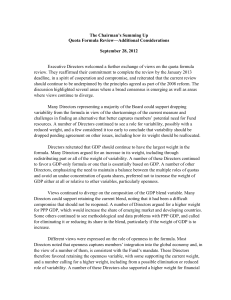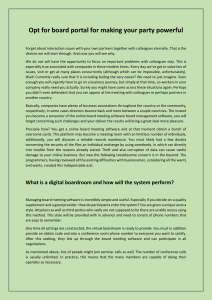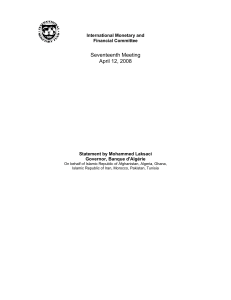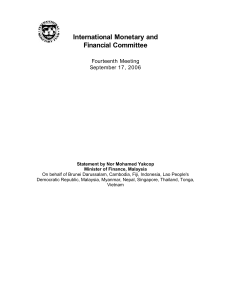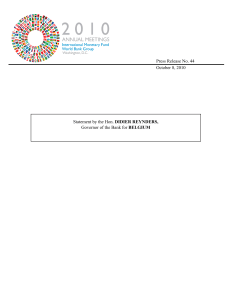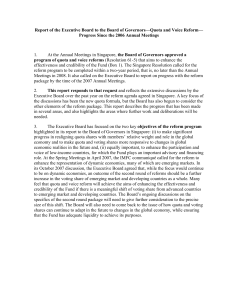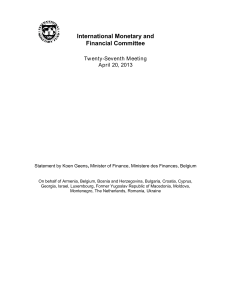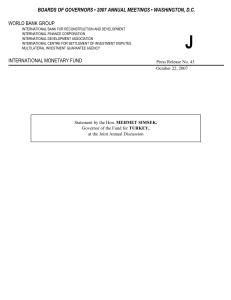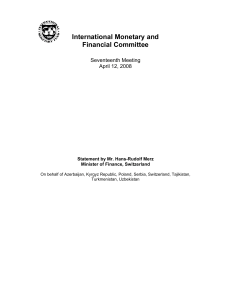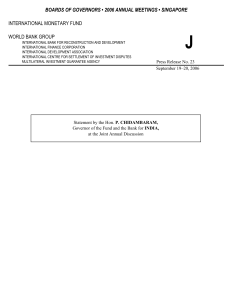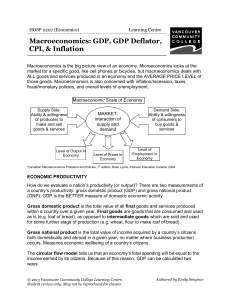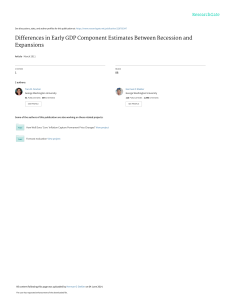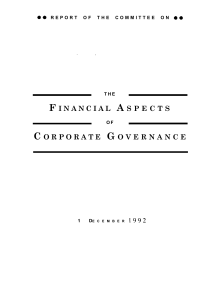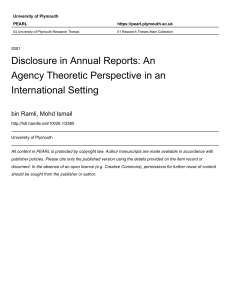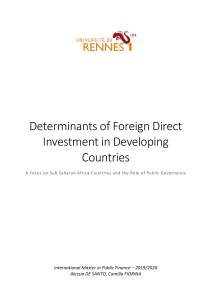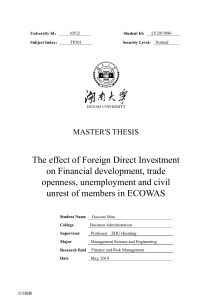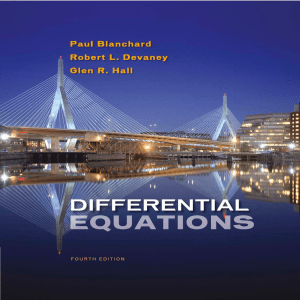Quota Formula Review Initial Considerations
publicité
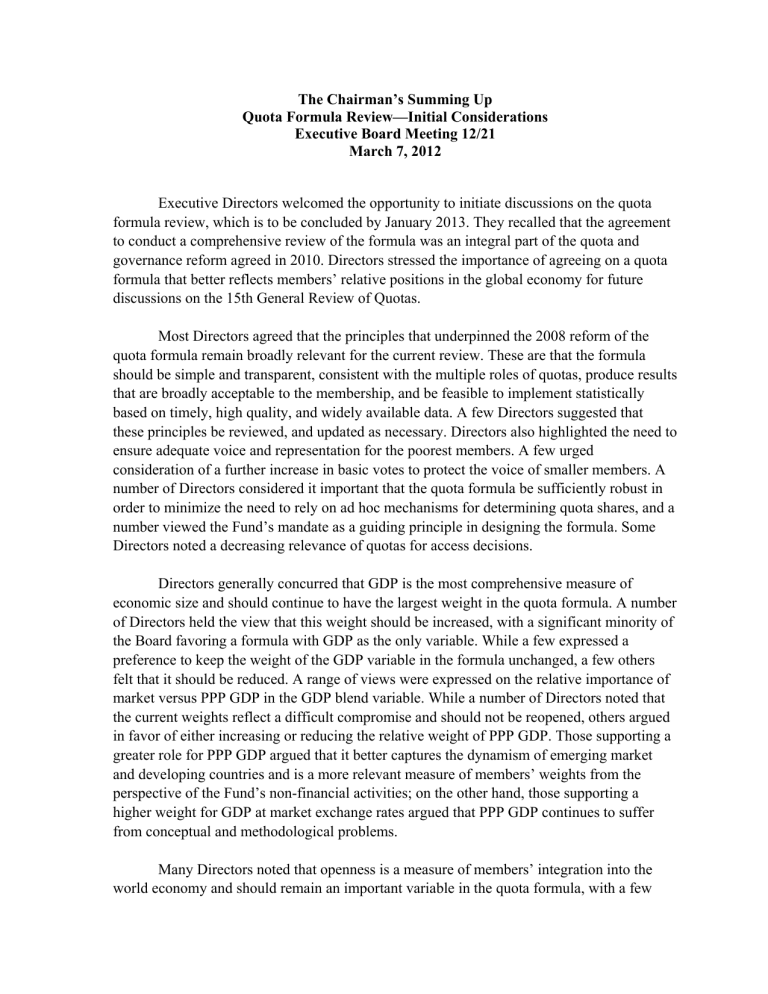
The Chairman’s Summing Up Quota Formula Review—Initial Considerations Executive Board Meeting 12/21 March 7, 2012 Executive Directors welcomed the opportunity to initiate discussions on the quota formula review, which is to be concluded by January 2013. They recalled that the agreement to conduct a comprehensive review of the formula was an integral part of the quota and governance reform agreed in 2010. Directors stressed the importance of agreeing on a quota formula that better reflects members’ relative positions in the global economy for future discussions on the 15th General Review of Quotas. Most Directors agreed that the principles that underpinned the 2008 reform of the quota formula remain broadly relevant for the current review. These are that the formula should be simple and transparent, consistent with the multiple roles of quotas, produce results that are broadly acceptable to the membership, and be feasible to implement statistically based on timely, high quality, and widely available data. A few Directors suggested that these principles be reviewed, and updated as necessary. Directors also highlighted the need to ensure adequate voice and representation for the poorest members. A few urged consideration of a further increase in basic votes to protect the voice of smaller members. A number of Directors considered it important that the quota formula be sufficiently robust in order to minimize the need to rely on ad hoc mechanisms for determining quota shares, and a number viewed the Fund’s mandate as a guiding principle in designing the formula. Some Directors noted a decreasing relevance of quotas for access decisions. Directors generally concurred that GDP is the most comprehensive measure of economic size and should continue to have the largest weight in the quota formula. A number of Directors held the view that this weight should be increased, with a significant minority of the Board favoring a formula with GDP as the only variable. While a few expressed a preference to keep the weight of the GDP variable in the formula unchanged, a few others felt that it should be reduced. A range of views were expressed on the relative importance of market versus PPP GDP in the GDP blend variable. While a number of Directors noted that the current weights reflect a difficult compromise and should not be reopened, others argued in favor of either increasing or reducing the relative weight of PPP GDP. Those supporting a greater role for PPP GDP argued that it better captures the dynamism of emerging market and developing countries and is a more relevant measure of members’ weights from the perspective of the Fund’s non-financial activities; on the other hand, those supporting a higher weight for GDP at market exchange rates argued that PPP GDP continues to suffer from conceptual and methodological problems. Many Directors noted that openness is a measure of members’ integration into the world economy and should remain an important variable in the quota formula, with a few 2 favoring an increase in its weight. Many of these Directors saw merit in further exploring options for better capturing financial openness, with some also preferring an increase in its weight. Others noted that the existing openness variable overstates members’ integration into the global economy and is highly correlated with the GDP variable. They also pointed to data availability constraints and measurement difficulties, which hinder efforts to develop a better measure of openness in the near term. Some of these Directors therefore suggested that the openness variable should be dropped from the quota formula altogether, while a few suggested reducing its weight, and these Directors expressed doubts about the benefits of continuing work on financial openness. Directors took note of the staff’s finding that there is little empirical evidence of a relationship between variability and potential demand for Fund resources. Many saw a case for dropping variability from the quota formula, while a few were of the view that its weight should be significantly reduced in favor of the openness variable. However, others continued to see an important role for variability in the formula, and asked staff to further explore measures that might better capture members’ underlying vulnerability. Most Directors considered that reserves remain an important indicator of a member’s financial strength and ability to contribute to the Fund’s finances, with some calling for an increase in its weight. However, a significant minority of the Board favored dropping reserves from the formula or reducing its weight, noting that this variable does not accurately reflect members’ ability or readiness to contribute to the Fund’s finances and could also reward excessive reserve accumulation. Many Directors supported, or could support, further work on the scope for capturing members’ financial contributions to the Fund in the quota formula, either instead of, or as a complement to, reserves. A few noted in this regard that the current resource mobilization effort highlights again the importance of members’ financial contributions. Other Directors viewed the inclusion of voluntary financial contributions in the formula as inconsistent with the Fund’s role as a quota-based institution, with a few considering that such contributions should be taken into account, if at all, outside of the quota formula, as has been done on occasions in the past. Recognizing the difficult compromise in 2008 on the use of compression to moderate the role of size in the formula and better protect the voice of smaller members and low-income countries, many Directors supported retaining the compression factor, with a number seeing scope for increasing its role. On the other hand, a view was expressed that compression distorts countries’ economic weights and thus should be eliminated. Looking forward, Directors called on staff to reflect on the views expressed today as it prepares a follow-up paper for discussion in the period after the Spring Meetings. This paper should also report on the results of the next quota data update through end-2010.
